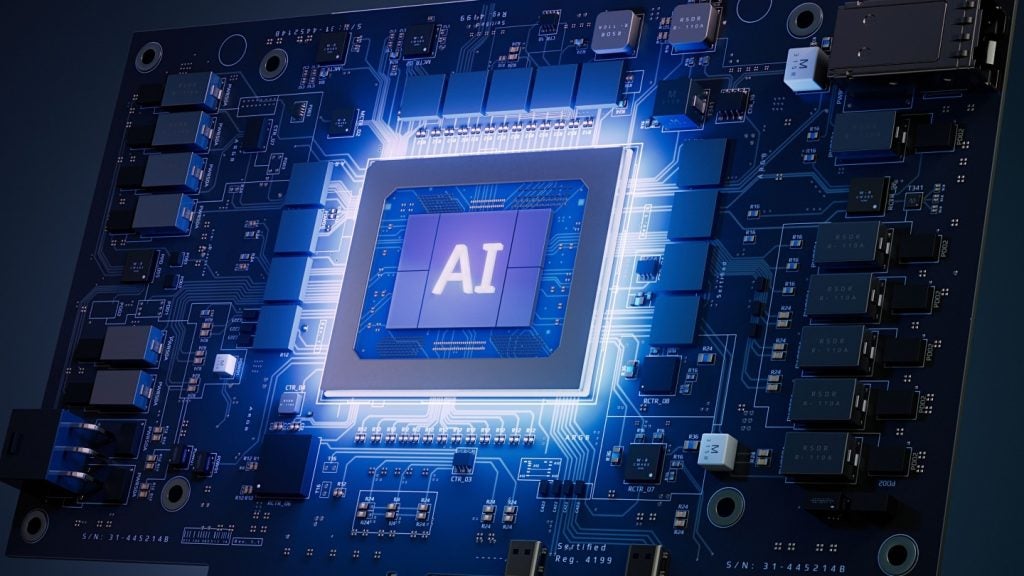
India’s Prime Minister, Narendra Modi, is among several global leaders who were the first to recognise that today’s global power and influence can only be won through control of data, servers and algorithms rather than the military power of nation states. This collision of geopolitics and technology risks coming to a head in 2024 as much of the world heads to the voting booth.
Modi is the seventh most followed public figure on X, formerly Twitter, surpassing both Donald Trump and Taylor Swift in followers and ranking as the second most followed global political figure after Barack Obama. This is emblematic of his administration’s foresight in owning the country’s online political spaces. For example, Modi’s government was quick to enter the AI regulation debate, in April 2023, when some viewed the administration’s admonishment of Google’s GenAI chatbot Gemini for describing Modi as a fascist as a cynical move to shape the country’s AI regulation to suit his political campaigning.
A prescient move, in a post-truth age, for which the World Economic Forum cited misinformation as the greatest global risk factor in 2024. India with its young, techno-savvy population is fertile ground for the spread of misinformation at scale. As the Indian election approaches, Big Tech companies have duly announced policies and procedures to guard against such election misinformation – but most agree that no amount of digital watermarking and content labels on political advertising and propaganda will stop the onslaught of polarising narratives.
It may not be possible to conclude whether the final election result reflects anti-democratic forces at play, but how this result will affect India’s domestic technology industry, and its position globally, appears to be a simple case of whether an incumbent win – as all polls indicate – will change anything at all.
Technology is India’s new global battlefront
Silicon Valley’s Indian diaspora is extremely well represented among its tech leaders. This outpost of Indian soft power at the global epicentre of the technology industry has served Modi’s government well – if only in terms of perception. In 2023, in a move worthy of Silicon Valley’s most elite players, India was the first country to successfully land on the moon’s lunar south pole region. India – and Modi’s – increasing international stature has been accompanied by massive growth in grass roots technology development and manufacturing on Indian soil.
Since Modi took office in 2014, India has risen from the world’s tenth-largest economy to the fifth-largest, and one of the fastest growing among industrialised nations. Modi’s ‘Make in India initiative’ was a campaign promise in 2014 to make the country into a global design and manufacturing hub, with technology at its core.
How well do you really know your competitors?
Access the most comprehensive Company Profiles on the market, powered by GlobalData. Save hours of research. Gain competitive edge.

Thank you!
Your download email will arrive shortly
Not ready to buy yet? Download a free sample
We are confident about the unique quality of our Company Profiles. However, we want you to make the most beneficial decision for your business, so we offer a free sample that you can download by submitting the below form
By GlobalDataHowever, this rapid domestic growth has not realised Modi’s ambition for India to become a leading tech superpower. Evaluating India’s potential requires distinguishing between different technology industry sub-sectors. So much depends on the type of activity, whether hardware assembly of smartphones and electric vehicles, advanced chip manufacturing, software, services, fintech and payments, AI, greentech and tech exports, for example.
According to GlobalData analyst Mike Orme, over the next five to ten years a new Modi regime will have only a marginal impact on India’s influence over global commercial manufacturing, compared with China, the EU, Japan, Malaysia, Singapore, South Korea and the US.
Despite India’s deep tech scientific research and engineering expertise, Orme asks: “Where is India’s OpenAI or Quantinuum?” referring to the country’s lack of global leadership in the field of AI and quantum computing – widely viewed as the two emerging technologies considered the route to global tech dominance.
India strength in pharmaceuticals development and production is self-evident. “But the real meat for the achievement of economic power lies in being able to translate this front end, like it does in pharma, into manufactured goods or hyperscaler-style brain hacking social media,” Orme adds.
Many have postured that India stands to benefit from a trend that has seen foreign manufacturing leave China, but Orme sees this as a “diversionary Wall Street narrative” for the global fund manager crowd that has fixated on India as a new investment destination of choice.
In reality, India’s share of manufacturing is running at around 17–18% of gross value added (GVA), close to its long-term average. That is far lower than the government’s long-standing aim to raise it to 25% by 2025. A linear trend forecast, according to GlobalData, shows the share of manufacturing reaching just 20% of GVA in the next ten years.
High profile moves by multinational corporations, namely Apple, to diversify manufacturing away from of China have been slow. Apple still makes 90% of its product lines in China despite moves to India, with Vietnam and Mexico competitively placed to win any manufacturing flight from China, says Orme.
In addition, yields on Indian-sourced components do not meet Apple’s zero defects standard, notes Orme. “Recently for instance, the yield on Tata subsidiary-supplied castings was only 50%,” he notes.
This may explain why Modi’s $10bn (Rs833.79bn) US-style ‘Chips Act’ to entice overseas chipmakers, has not been successful, explains Orme. Among these, only Micron has selected India for test, assembly and packaging services while other chipmakers look towards Japan, Singapore and Malaysia for geographic diversification.
The semiconductor industry involves the most highly intricate processes and a highly skilled labour force to build fabs, install equipment and operate them. India is at the other end of that spectrum, says Orme.
China remains India's fiercest competitor
China business consultant Cameron Johnson is vice-chair of the US Chamber of Commerce in Shanghai, an NYU adjunct professor, and partner at Tidal Wave Solutions, a consultancy advising US and European businesses investing in China. Johnson cites five key elements to become a world-class technology manufacturing destination: advanced infrastructure; talent and the ability to train and upskill; government support and incentives; technology; and raw materials and/or the ability to process them.
“China has these five areas in most industries, and India currently has them in almost no industry,” says Johnson, who notes that Apple’s iPhone production in India includes the vast majority of parts made outside of the country, specifically in China. Johnson characterises India’s so-called manufacturing strength in technology under the Modi regime as “assembly manufacturing” that constitutes a first step in moving up the manufacturing value chain.
Others are more positive about India's technology manufacturing future. Vikas Pershad is a portfolio manager in Asian equities for M&G Investments. He says a third term for Modi will see the prime minister ready to sharpen his administration’s focus on its 'Make in India' initiative.
This is likely to take the form of political realignments in India’s favour (the new Trilateral Technology Dialogue among India, the US and South Korea is one example); expanding digital infrastructure; greater semiconductor and electronics component manufacturing within India’s borders; stricter regulation of digital platforms and machine learning; and a heightened emphasis on cybersecurity and data sovereignty, according to Pershad.
“Driving this strategy is the aim that foreign firms that want to sell to India must hire more Indians, design more products in India – and build them onshore as well,” says Pershad who believes that the size of the Indian market and the rapidly increasing purchasing power at the top of the pyramid, is reason enough for foreign companies to play along.
India's FDI problem
However, the data does not support this upbeat view of India's foreign investment potential. Foreign direct investment (FDI) has long been regarded as critical for economic development and, importantly for India, for knowledge and skills transfer. Overall FDI inflows in India slowed sharply in 2023 – more rapidly, in fact, than the more general slowdown in global FDI inflows.
Despite India’s declining FDI, Modi's government has been focused on raising India's profile as an investment destination with infrastructure improvement schemes and production-linked incentive schemes.
TS Lombard’s Shumita Deveshwar believes India has an opportunity to become not just a tech, but also a global manufacturing hub. She cites the country's "strong tech industry and culture of entrepreneurship that has been focusing on higher value-added products, the availability of a vast pool of low-cost labour as well as raw materials, and the realigning of global supply chains at a time when India appears to be a relative safe haven amid disruptions in the geopolitical world order.”
However, Deveshwar cautions that India may not moving fast enough to capture this opportunity, partly owing to policy complacency and perhaps a weak will to reform in "good times" given India's strong GDP growth and a lack of political competition.
India’s pace of trade and investment reforms is slow. In fact, according to data from US-based think tank the Centre for Strategic and International Studies, the country saw the least number of FDI reforms taking place in the Modi government’s second term since the mid-1990s.
The number of partial or complete reforms undertaken by the Modi government in its second term were half of those in its first term in office. The government made progress on building infrastructure, increasing digitisation, cleaning up banks’ balance sheets, streamlining taxes and plugging leakages in subsidy distribution, but it pulled back on key structural reforms such as land use and farm laws. However, it has also been unable to implement its stated privatisation plans or push through new labour codes at the state level, says Deveshwar.
Continuity is golden
To become a tech superpower, Modi’s India faces some steep challenges. According to the India Skills Report 2023, only half of India’s youth are educated to a level that is employable, with a particularly low female participation in the labour force. The country's physical infrastructure and power supply are both problematic. Foreign investors struggle with corrupt and over-bureaucratic domestic regimes.
Tech regulation is another sticking point for which Modi’s government will need to balance its 'Make in India' aspirations with the very real prospect that multinational corporations will choose other manufacturing destinations if the country’s domestic content requirements, protectionism and red tape prove too onerous.
The counterpoint to these challenges is that within the world of trade and investment, continuity is golden, and win for Modi is a win for continuity. In a global technology industry that has become overtly geo-politicised, foreign investors are watching for political stability as well as friendly government policy and support.
“Geopolitical risk has historically tended to be remote from day-to-day business concerns. This is no longer the case,” says TS Lombard’s Christopher Granville in GlobalData’s March 2024 Geopolitics Executive Briefing. This is particularly true of the technology industry as we move towards an increasingly technopolar world, a term denoting technology as the underlying force of global influence, sovereignty and power. The less geopolitical risk, the more India is placed to become the rising technology superpower it aspires to become.







